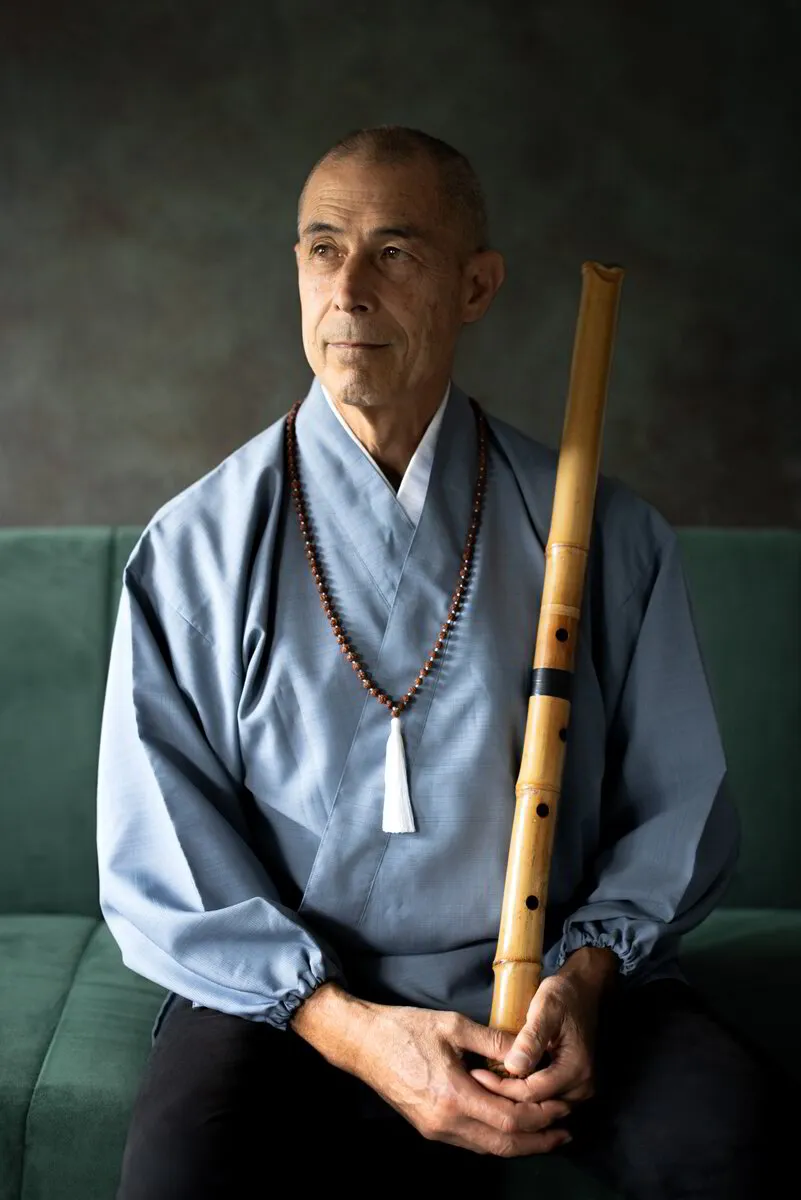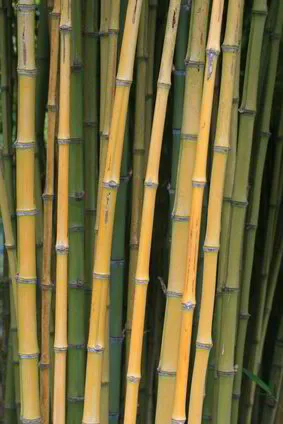About Me, my Music & Shakuhachi
about Riley Lee
Though I was born in Texas, I don’t remember much of my birthplace. Our family moved to Oklahoma when I was six. The Midwest in the 1950s was a wonderful place for a young boy. We moved to Hawai’i when I was 14. Honolulu in the 196os was also a wonderful place, especially for a teenager.
I began playing shakuhachi in Japan in 1971.
My primary teacher was Katsuya Yokoyama. A very wise and generous man, Yokoyama sensei seemed to be able to maintain the perfect balance between being always ready to laugh yet always serious, extremely kind yet ever so strict. Sadly, he died in 2010.
In the early 1970s, I became the first non-Japanese professional taiko (Japanese drums) player, with Sado no Kuni Ondekoza (now Kodo). I didn’t realise that I was the first, until my friend Kenny Endo (a real taiko player) pointed it out to me a few years ago.
In 1980, I also became the first non-Japanese shakuhachi Grand Master (dai shihan). Again, I didn’t realise that this was another ‘first’ at the time. I was fortunate to be at the right place at the right time, and to have the right inclination to practice what seemed like all day every day for years.
I have a PhD (ethnomusicology) from Sydney University and an MA from University of Hawai’i. Together, these two degrees took me ten years to complete, one year more than what the dai shihan ‘degree’ took.
A few years ago, I recently created and taught a semester-long course at Princeton University on the mind, memory, meditation and mindfulness and music, based on the latest research in cognitive science. I’m fairly certain that I learned more from the experience than the students.
So far, I’ve made more than 60 recordings, of music from many genres of music. My first album, in 1980, was on vinyl, because CDs weren’t invented yet. It’s still available on the Smithsonian-Folkways label. More are in the works.
Most of my recordings aren’t featured on this site. The music you will find here has been chosen very carefully to fit the themes of this site.
At present, my wife Patricia and I live in Manly NSW Australia, another wonderful place, especially now.
First Encounter
Riley first heard the shakuhachi in 1967 while attending Roosebelt High School in Honolulu Hawai’i, on an LP recording brought home by his elder brother. About the same time, his Chinese father gave him a dongxiao, a Chinese bamboo flute whose ancestry is shared with the shakuhachi, and taught him an old Chinese folksong on it.
In 1971, Riley made his second visit to Japan on the end of a six month, round the world backpacking journey, with no funds to make the final leg back to Hawai’i. He planned to be in Japan for three months, long enough to work for his plane fare back home.
After a while, remembering his father’s bamboo flute the dongxiao, Riley decided to buy a shakuhachi. He went to the Hankyû Department store in Osaka, where he found instruments ranging in price from ¥10,000 to ¥50,000. They all looked like pieces of bamboo to him, so Riley asked the salesperson what the difference was between them.
Rather than explaining why the most expensive instrument was the best, the salesperson, an older man and himself a shakuhachi player, instead looked hard at Riley, and and asked him, "Do you really wanted to know?" Though taken aback, Riley immediately replied, "well yes, I really do!"
"Well then , you should go to a teacher from whom you can learn the difference. I'll introduce you to someone."
The man proceeded to look up in a telephone directory a teacher that he thought was the best in the area (and that had a telephone) and set up a lesson.
With the old man’s introduction and a borrowed instrument, Riley began studying with this teacher. He eventually did purchase a shakuhachi, and became ever more immersed in the music and tradition of the instrument.
The three months stay in Japan eventually stretched out to seven years, the end of which the shakuhachi was the focal point of Riley’s working life.
Listen to
Calm- the Soothing Sounds of the Shakuhachi
about the Music
The single, most important element of my music is breath.
How we breathe both manages and is managed by our emotion, our state of being. This is because our breath can be either a conscious or unconscious act.
When we are really stressing, if we notice our stress we often try to calm ourselves down by taking a deep, slow breath. We do this almost automatically. We take a slow ‘relaxed’ breath even though it’s the last thing we feel like doing.
The music on this site is all about breathing. One reason this music can put babies and small children to sleep is because we often and naturally adapt our own breathing to the breath of those around us.
It’s not the music that calms you or relaxes you or makes you mindful. You do that to yourself. Think of the music as creating a the space in which your own breath can be.
The quality of the music lies in the quality of the breath.
Listen to
Nesting of the Cranes
about the Shakuhachi
Every shakuhachi begins as a stalk of yellow-green bamboo swaying in the wind.
The bamboo used to make the shakuhachi is a very common species called madake, which means ‘true bamboo’ in Japanese. This type of bamboo often grows in large groves that may cover many acres.
One grove may contain hundreds, or even thousands of other stalks, nearly all of which are as tall as a six storey building. The entire grove is a single living creature.
Though each stalk (called culms) has its own clump of roots, all culms in a grove are connected by a fantastic network of runner roots. Every culm contributes nourishment to the entire grove.
Master craftsmen are still the only source of quality instruments. Because each piece of bamboo is unique in dimensions, density and bore, getting a shakuhachi to play well is mostly an intuitive process.
The shakuhachi seems at first a very simple instrument. With only five finger holes, (four in the front of the flute and one in the back for a thumb), it has less finger holes than almost any other common wind instrument, including the penny whistle.
Yet despite its simple construction, the shakuhachi in the hands of a master can produce an unbelievable wide range of sounds. It can be as expressive as the human voice.


